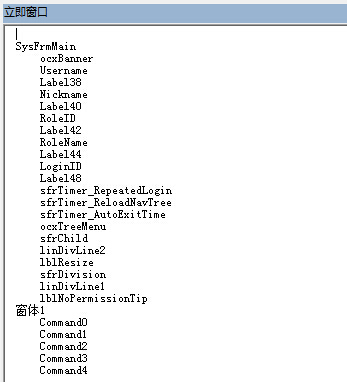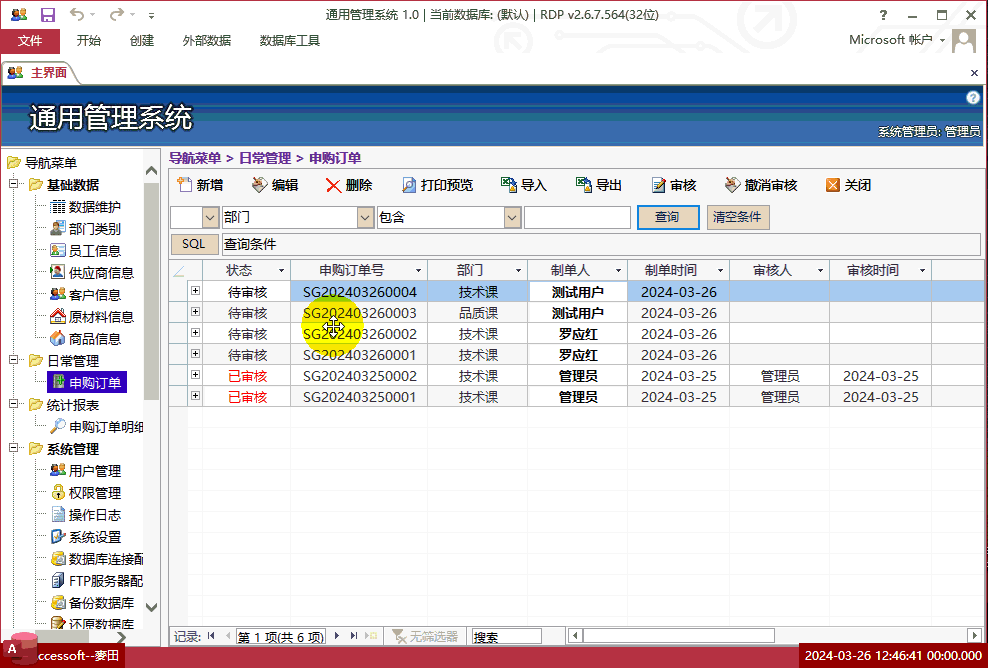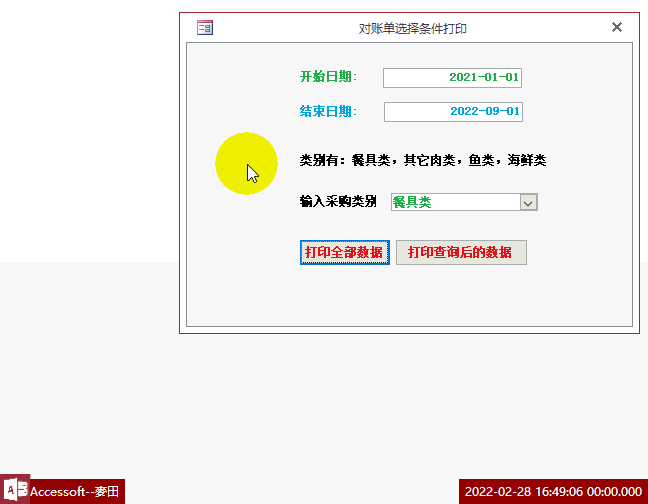Access VBA教程:Count属性
时 间:2016-03-22 08:31:23
作 者:杨雪 ID:42182 城市:南京
摘 要:应用于窗体和报表对象的 Count属性
正 文:
使用 Count属性可以判断指定集合中的项目个数。Integer 型,可读/写。
expression.Count
expression 必需。返回以上对象之一的表达式。
![]()
应用于 AccessObjectProperties、AllDataAccessPages、AllDatabaseDiagrams、AllForms、AllFunctions、AllMacros、AllModules、AllObjects、AllQueries、AllReports、AllStoredProcedures、AllTables、AllViews、Controls、DataAccessPages、FormatConditions、Forms、Modules、Pages、Printers、Properties、References 和 Reports对象的 Count属性
使用 Count属性可以判断指定集合中的项目个数。Long 型,只读。
expression.Count
expression 必需。返回以上对象之一的表达式。
设置
Count属性设置是整型值,且在所有视图中都是只读的。
可以使用宏或Visual Basic 确定对象的 Count属性。
说明
例如,如果要确定当前打开的窗体个数或数据库中现有的窗体个数,则可以使用以下代码:
' Determine the number of open forms.
forms.count
' Determine the number of forms (open or closed)
' in the current database.
currentproject.allforms.count
VBA示例
以下示例使用 Count属性控制循环,该循环用于打印所有打开的窗体及其控件的信息。
Sub Print_Form_Controls()
Dim frm As Form, intI As Integer
Dim intJ As Integer
Dim intControls As Integer, intForms As
Integer
intForms = Forms.Count
' Number of open forms.
If intForms > 0
Then
For intI = 0 To intForms -
1
Set frm =
Forms(intI)
Debug.Print
frm.Name
intControls
= frm.Count
If
intControls > 0
Then
For intJ = 0 To intControls -
1
Debug.Print vbTab;
frm(intJ).Name
Next intJ
Else
Debug.Print vbTab; "(no
controls)"
End If
Next intI
Else
MsgBox "No open forms.",
vbExclamation, "Form Controls"
End If
End Sub
截图:

Access软件网QQ交流群 (群号:54525238) Access源码网店
常见问答:
技术分类:
源码示例
- 【源码QQ群号19834647...(12.17)
- 用Access连续窗体制作的树...(11.03)
- 【Access高效办公】上一年...(10.30)
- Access制作的RGB转CM...(09.22)
- Access制作的RGB调色板...(09.15)
- Access制作的快速车牌输入...(09.13)
- 【Access高效办公】统计当...(06.30)
- 【Access高效办公】用复选...(06.24)
- 根据变化的日期来自动编号的示例...(06.20)
- 【Access高效办公】按日期...(06.12)

学习心得
最新文章
- SqlServer默认当前时间用什...(11.28)
- 【Access日期时间区间段查询示...(11.19)
- Microsoft Access不...(11.07)
- 用Access连续窗体制作的树菜单...(11.03)
- 【Access高效办公】上一年度累...(10.30)
- Access做的一个《中华经典论语...(10.25)
- Access快速开发平台--加载事...(10.20)
- 【Access有效性规则示例】两种...(10.10)
- EXCEL表格扫描枪数据录入智能处...(10.09)
- Access快速开发平台--多行文...(09.28)




.gif)

